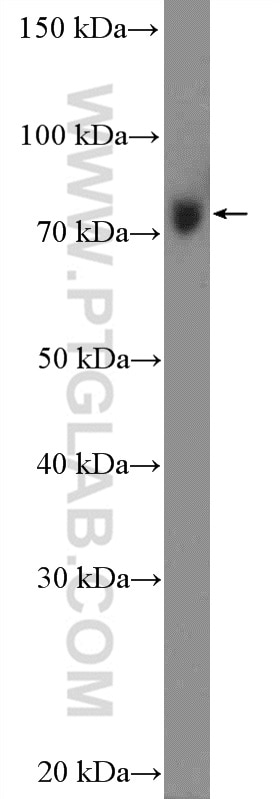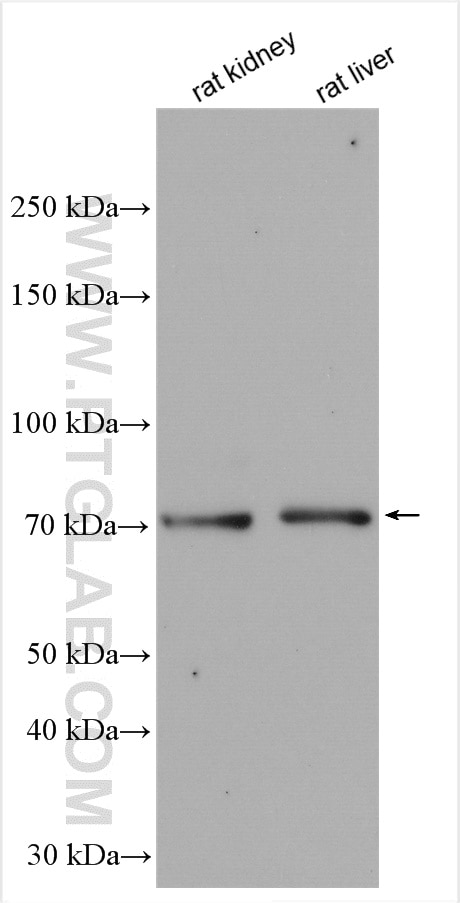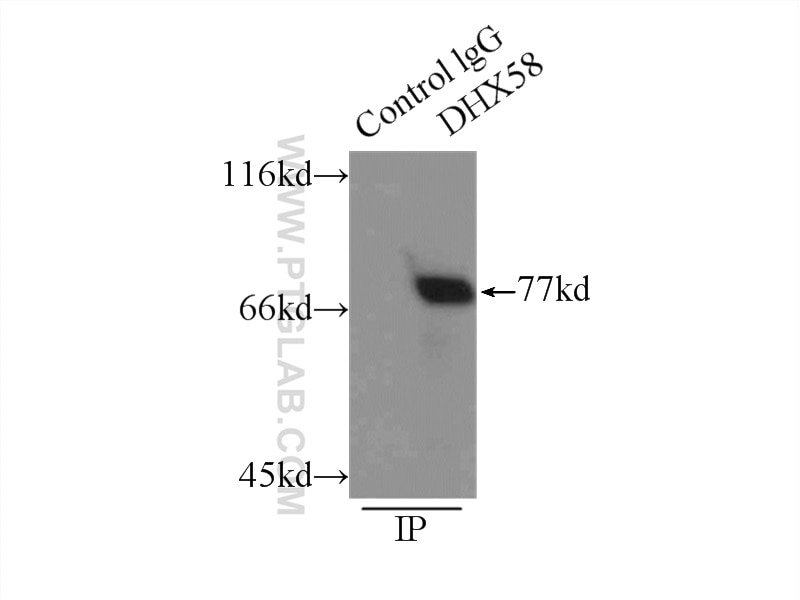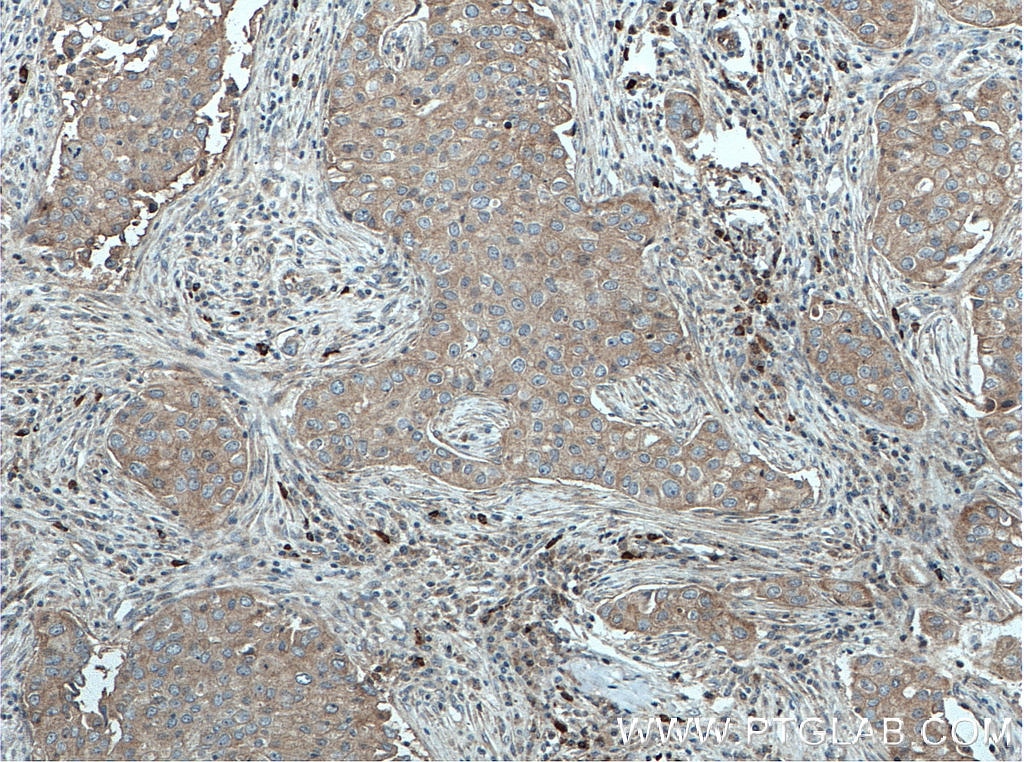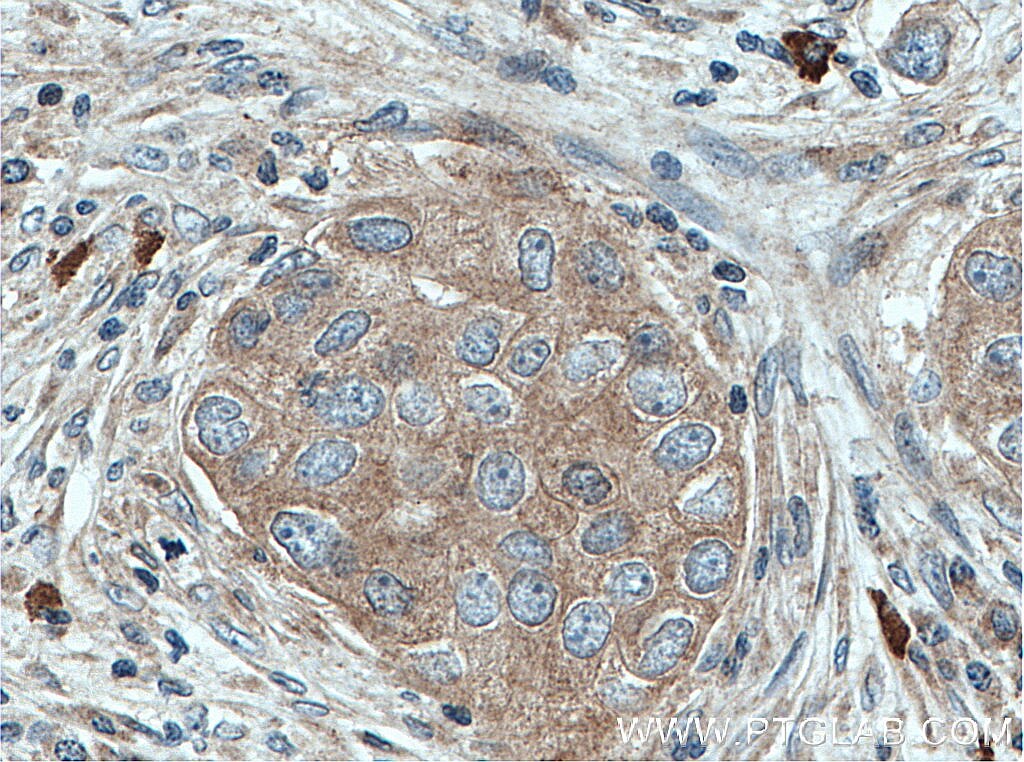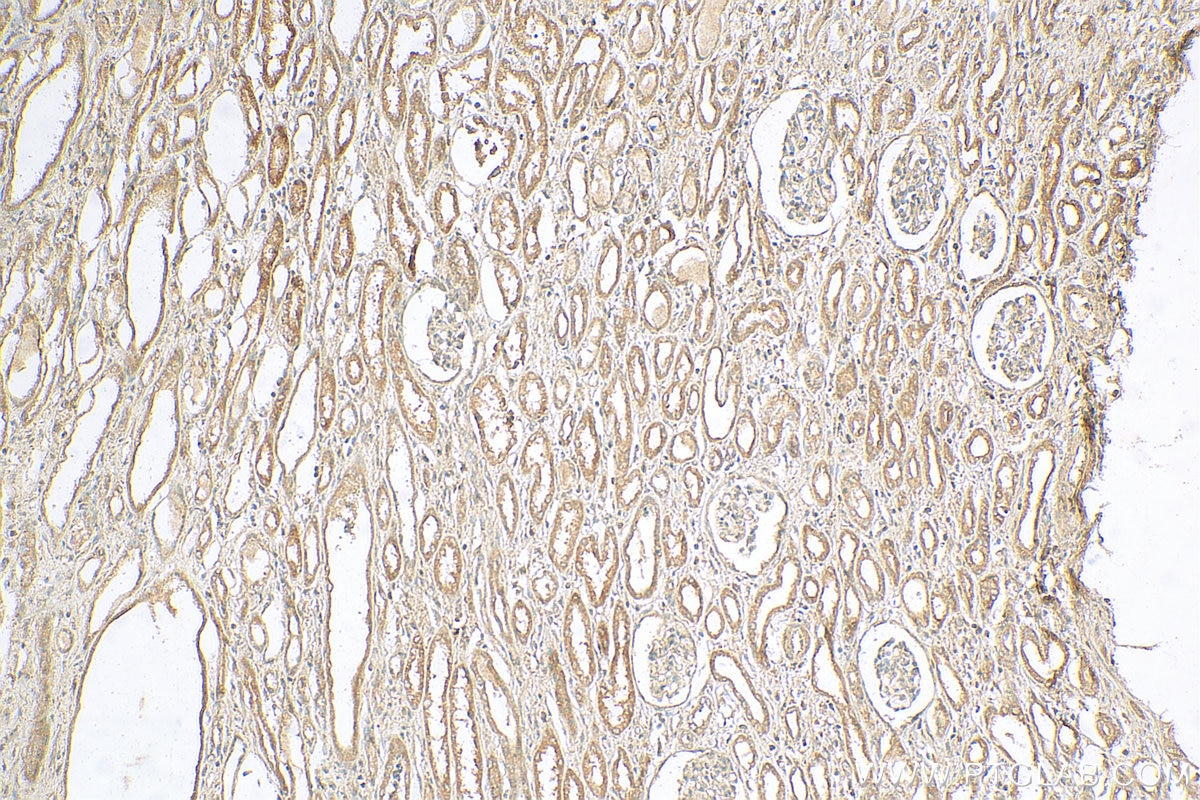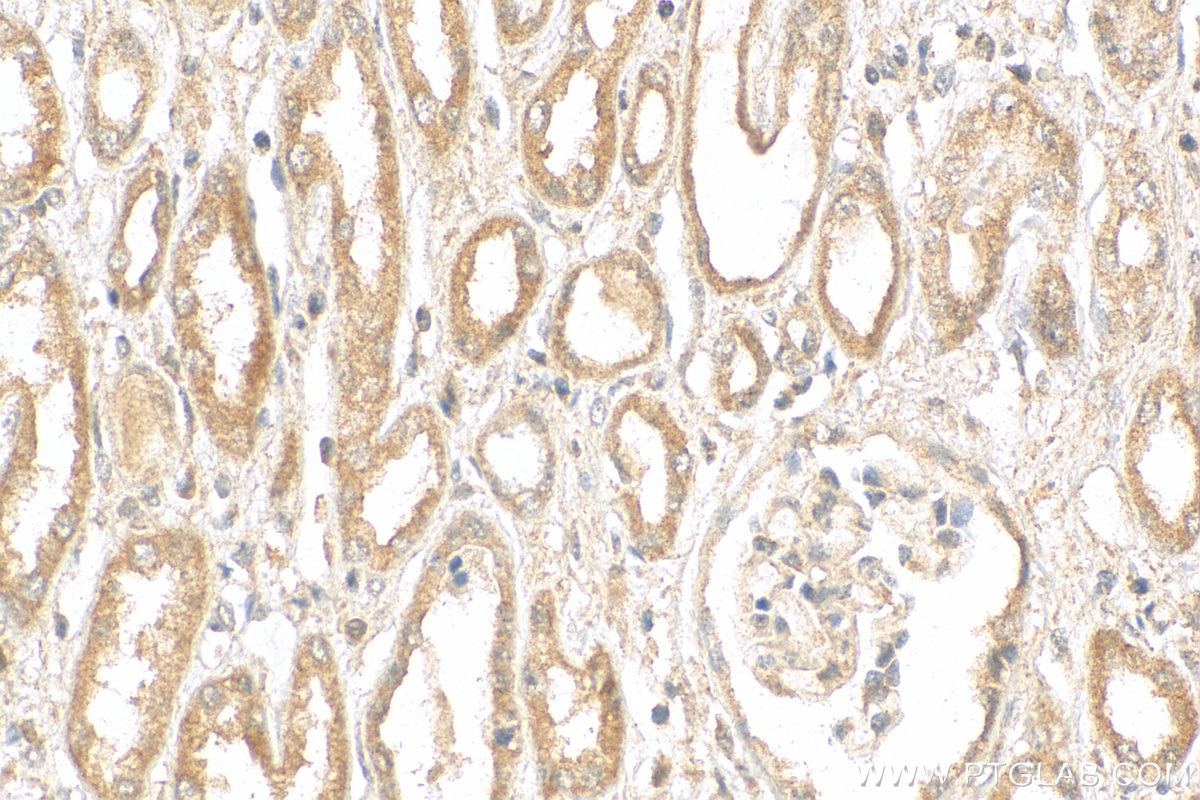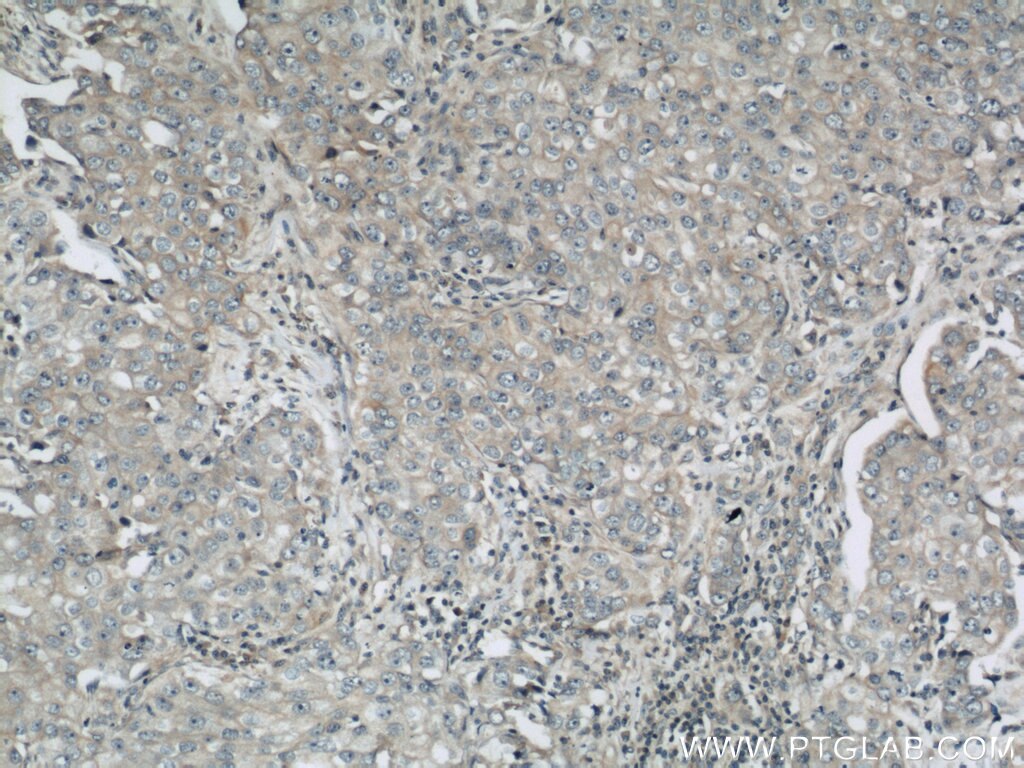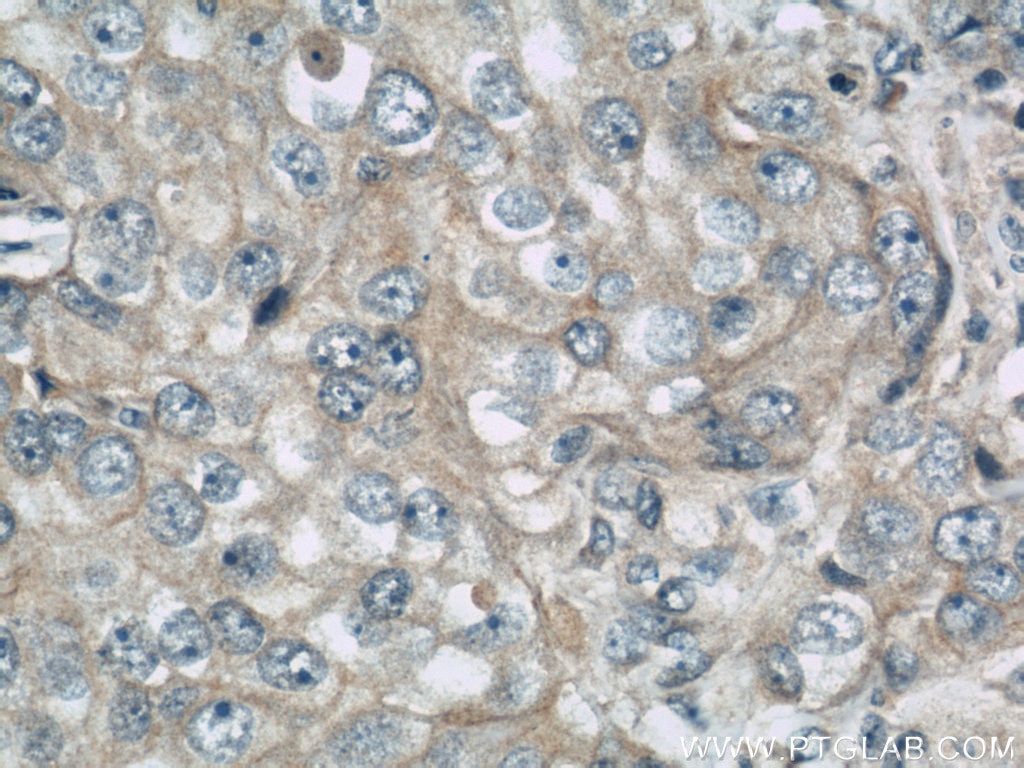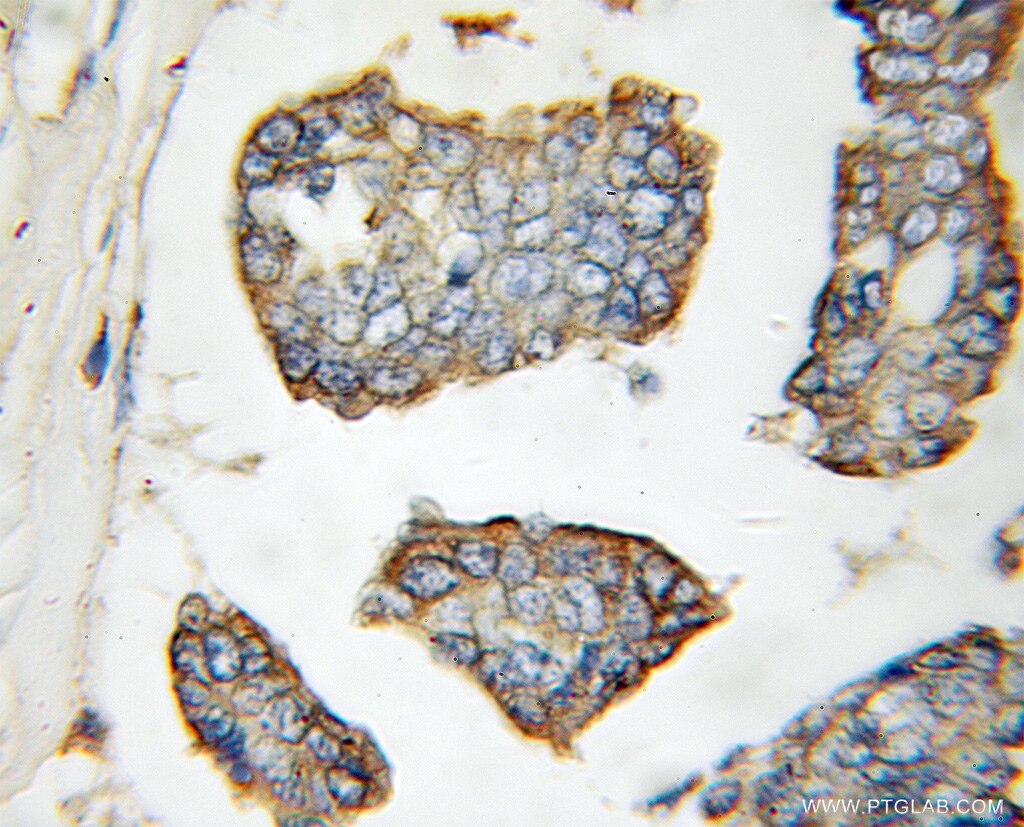Validation Data Gallery
Tested Applications
| Positive WB detected in | HEK-293 cells, rat kidney tissue, rat liver tissue |
| Positive IP detected in | mouse liver tissue |
| Positive IHC detected in | human breast cancer tissue, human nephroblastoma tissue Note: suggested antigen retrieval with TE buffer pH 9.0; (*) Alternatively, antigen retrieval may be performed with citrate buffer pH 6.0 |
Recommended dilution
| Application | Dilution |
|---|---|
| Western Blot (WB) | WB : 1:200-1:1000 |
| Immunoprecipitation (IP) | IP : 0.5-4.0 ug for 1.0-3.0 mg of total protein lysate |
| Immunohistochemistry (IHC) | IHC : 1:50-1:500 |
| It is recommended that this reagent should be titrated in each testing system to obtain optimal results. | |
| Sample-dependent, Check data in validation data gallery. | |
Published Applications
| KD/KO | See 4 publications below |
| WB | See 15 publications below |
| IHC | See 2 publications below |
| IF | See 2 publications below |
| IP | See 2 publications below |
| CoIP | See 1 publications below |
| RIP | See 1 publications below |
Product Information
11355-1-AP targets DHX58/LGP2 in WB, IHC, IF, IP, CoIP, RIP, ELISA applications and shows reactivity with human, mouse, rat samples.
| Tested Reactivity | human, mouse, rat |
| Cited Reactivity | human, mouse, pig, monkey, chicken |
| Host / Isotype | Rabbit / IgG |
| Class | Polyclonal |
| Type | Antibody |
| Immunogen |
CatNo: Ag1910 Product name: Recombinant human DHX58 protein Source: e coli.-derived, PGEX-4T Tag: GST Domain: 330-678 aa of BC014949 Sequence: LFDDRKNELAHLATHGPENPKLEMLEKILQRQFSSSNSPRGIIFTRTRQSAHSLLLWLQQQQGLQTVDIRAQLLIGAGNSSQSTHMTQRDQQEVIQKFQDGTLNLLVATSVAEEGLDIPHCNVVVRYGLLTNEISMVQARGRARADQSVYAFVATEGSRELKRELINEALETLMEQAVAAVQKMDQAEYQAKIRDLQQAALTKRAAQAAQRENQRQQFPVEHVQLLCINCMVAVGHGSDLRKVEGTHHVNVNPNFSNYYNVSRDPVVINKVFKDWKPGGVISCRNCGEVWGLQMIYKSVKLPVLKVRSMLLETPQGRIQAKKWSRVPFSVPDFDFLQHCAENLSDLSLD 相同性解析による交差性が予測される生物種 |
| Full Name | DEXH (Asp-Glu-X-His) box polypeptide 58 |
| Calculated molecular weight | 678 aa, 77 kDa |
| Observed molecular weight | 77 kDa |
| GenBank accession number | BC014949 |
| Gene Symbol | DHX58 |
| Gene ID (NCBI) | 79132 |
| RRID | AB_2092319 |
| Conjugate | Unconjugated |
| Form | |
| Form | Liquid |
| Purification Method | Antigen affinity purification |
| UNIPROT ID | Q96C10 |
| Storage Buffer | PBS with 0.02% sodium azide and 50% glycerol{{ptg:BufferTemp}}7.3 |
| Storage Conditions | Store at -20°C. Stable for one year after shipment. Aliquoting is unnecessary for -20oC storage. |
Background Information
DHX58(Probable ATP-dependent RNA helicase DHX58) is also named as D11LGP2E, LGP2 and belongs to the RLR subfamily. DHX58, originally identified as a highly expressed gene in mammary tumors, is another cytoplasmic DEX(D/H)-box helicase that can recognize RNA(PMID: 18411269). It acts as a positive, but not negative, regulator of RIG-I-and MDA5-dependent recognition of RNA virus infection and plays a pivotal role in antiviral responses in vivo(PMID:20080593).
Protocols
| Product Specific Protocols | |
|---|---|
| IHC protocol for DHX58/LGP2 antibody 11355-1-AP | Download protocol |
| IP protocol for DHX58/LGP2 antibody 11355-1-AP | Download protocol |
| WB protocol for DHX58/LGP2 antibody 11355-1-AP | Download protocol |
| Standard Protocols | |
|---|---|
| Click here to view our Standard Protocols |
Publications
| Species | Application | Title |
|---|---|---|
Nat Commun RIG-I-like receptors direct inflammatory macrophage polarization against West Nile virus infection.
| ||
Nucleic Acids Res miR-122 does not impact recognition of the HCV genome by innate sensors of RNA but rather protects the 5' end from the cellular pyrophosphatases, DOM3Z and DUSP11. | ||
EMBO Rep RNA sensor LGP2 inhibits TRAF ubiquitin ligase to negatively regulate innate immune signaling. | ||
J Virol LGP2 Promotes Type I Interferon Production To Inhibit PRRSV Infection via Enhancing MDA5-Mediated Signaling
| ||
Cancer Sci Innate immune sensor laboratory of genetics and physiology 2 suppresses tumor cell growth and functions as a prognostic marker in neuroblastoma. |

